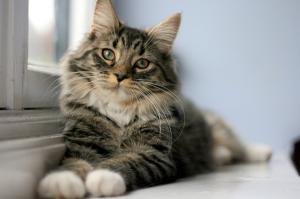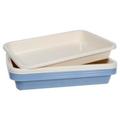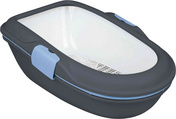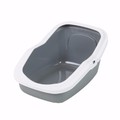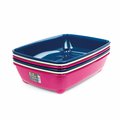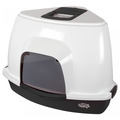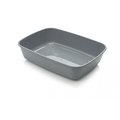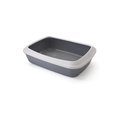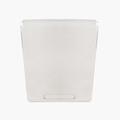Fortunately for us, most kittens and cats are litter-trained when we get them because they have mimicked their mother’s behaviour. This makes life a lot easier and saves us a great deal of time. But at some point or other, your cat may show an aversion to using its litter tray and start eliminating elsewhere.
Roughly 10% of all cats will develop an objection to their litter tray, which needs to be nipped in the bud as soon as possible. If it isn’t, the avoidance can quickly turn into a chronic problem that is harder to correct.
Why is my cat ignoring the litter tray?
There are many reasons why litter tray avoidance happens and several ways of trying to reverse the behaviour. Cats are finicky creatures that need to be sure they are toileting in an area that is clean and fresh. It may look clean to us but, to your cat, it might as well be the sewers. To keep your cat interested in using the litter tray, it is important to remove clumps daily and wash the tray thoroughly each week, replacing the litter anew.
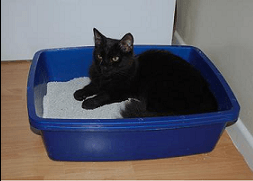 Besides issues with cleanliness, cats can be reluctant to use their trays either because it is too small or too closely positioned to eating and sleeping areas. Rather than choosing a litter tray that fits a particular corner of your home, choose one that accommodates your cat’s size. Your cat needs to have room to turn around comfortably and sit down.
Besides issues with cleanliness, cats can be reluctant to use their trays either because it is too small or too closely positioned to eating and sleeping areas. Rather than choosing a litter tray that fits a particular corner of your home, choose one that accommodates your cat’s size. Your cat needs to have room to turn around comfortably and sit down.
If your cat is avoiding the tray, move food and water bowls well away from the litter box to ensure these areas remain separate. After all, we wouldn't want to eat right beside the toilet either!
In multi-cat households, cats need their own personal space to eliminate in. Their territorial nature means cats are unlikely to share a litter tray with other cats in the same household. Make sure you provide enough litter trays for every cat in your home.
Sometimes it is the litter tray hood or liner that your cat doesn’t like, or it dislikes the odour of the litter. Most cats like their privacy when they go to the toilet so hooded trays are often the recommended option. That said, some cats feel too confined in this type of tray and unable to escape if they feel threatened.
Odourless litter prevents cats from developing a dislike to a particular fragrance and, in turn, a negative association with using the litter tray.
If your cat is eliminating outside the tray, it could be that the litter is too deep. Ideally, cat litter should be no deeper than 1-2 inches. When it is spread too thickly, cats can feel trapped and uncomfortable. Likewise, cats can be equally put-off by litter that isn’t deep enough to go about their business. It is important to be consistent in this regard.
Sometimes, cats are reluctant to eliminate on certain surfaces, in certain locations or on certain types of litter. If eliminating becomes painful (for medical reasons, perhaps), cats can develop negative associations with using the litter tray. These negative feelings can stem from many other things, including having an upsetting experience in the litter tray.
Household stress is another major trigger for litter problems and messy elimination. Something as simple as a new piece of furniture can be enough to upset a cat and prompt tray avoidance. Increased household noise and activity can make a cat anxious and unsettle its routines. 
Likewise, stressful events like fireworks, Halloween and christmas can heighten a cat's stress levels and lead to uncharacteristic behaviours. Between October and January when fireworks are ongoing and there are lots of visitors to the house, you may notice your cat exhibiting new behaviours, and litter tray avoidance could be one of them.
Try to reduce your cat’s stress levels as much as possible, using a Feliway diffuser to help. Feliway is a pheromone-based product that replicates the happy facial pheromones cats leave behind when they rub against things, usually when they're feeling relaxed and comfortable.The diffuser and spray both come highly recommended by our customers so are definitely worth a try!
We also have SettleMe, our own brand calming support supplement, which is available as chews or a liquid. Containing a concentrated blend of ingredients, our formulation is designed to help support calm behaviour and reduce anxiety, stress-related behaviours and over-activity in cats. Simply add to meals.
If you have any advice on correcting avoidance behaviours in cats, please share it with our other readers! Feel free to contact me directly with any further questions: [email protected]
Written by: Hannah
